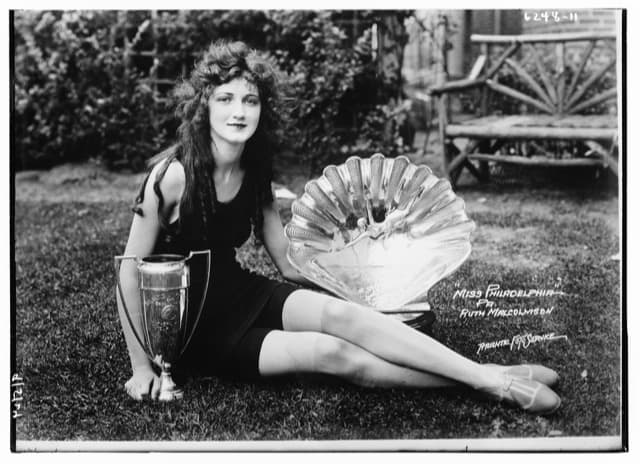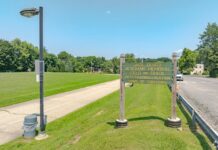
By Mary Hoar, City of Yonkers Historian, President Emerita Yonkers Historical Society, recipient of the 2004 Key to History, Member of the Yonkers Landmarks Preservation Board, and President Untermyer Performing Arts Council
Monday, April 17th
April 17, 1861: One hundred Yonkers men met at Farrington Hall to enlist “in defense of the Union.” One of the first three men to sign up was eighteen-year-old John Peene, scion of the Peene waterfront dynasty. Peene later served twice as Republican Mayor of Yonkers from 1894 to 1897. The first time he ran, he defeated celebrated author, humorist, satirist and editor John Kendrick Bangs by 207 votes. A few months later, Bangs turned his defeat into “Three Weeks in Politics” and sold 60,000 copies. The NY Times dubbed this works as “Mr. Bang’s Way of Getting Even.”
April 17, 1916: Seventy-five employees of the Habirshaw Cable and Wire Company in Yonkers received their pay and were immediately fired for participating in a recent strike, a strike that caused injuries to several people.
Tuesday, April 18th
April 18, 1925: Miss America of 1924 Ruth Malcomson, the “most beautiful girl in the United States,” appeared at the Strand Theater to open the competition selecting Miss Yonkers of 1925. She was welcomed by Florence Kreisler, Miss Yonkers1924, and given the “Freedom of the City” by Mayor Wiesendanger.
April 18, 1940: Former longtime Palisade Avenue resident Thomas Beer passed away suddenly; Beer had lived in Yonkers more than forty years, moving here when he was eight. A biographer, novelist and short-story writer, his most popular book was “The Mauve Decade,” a work that sold 22,000 copies. Three of his books with his unique style of “stylized prose,” including “The Mauve Decade,” were credited with reshaping contemporary biographies. At the time of his death, he was in poor health and hadn’t written for three years.
Wednesday, April 19th
April 19, 1907: The New York State Assembly passed a bill to abolish the Yonkers Board of Park Commissioners.
April 19, 1913: Alderman John Davis, nationally known for his anti-shorts campaign, was elected secretary of the D & D Construction Company. The company planned to develop land in the Northeastern portion of Yonkers called Reynolds Farm.
April 19, 1931: Mayor John Fogarty announced he would not seek reelection in the upcoming mayoral campaign; as City Hall buzzed with the news, names of several candidates were put forward as potential candidates.
Thursday, April 20th
April 20, 1882: The Committee on History and Historical Relics asked for the loan or gift of historical items for the observance of the bicentennial of Philipse Manor Hall.
April 20, 1903: Workmen moved a four-ton safe from the Yonkers Savings Bank on South Broadway to Manor Hall. The safe was purchased to be used in the Tax Receiver office.
April 20, 1908: Nineteen-year-old Thomas Morrissey of Yonkers, member of the Mercury Athletic Club, won the 12th annual Marathon of the Boston Athletic Association, defeating second place John Hayes by only 21 seconds. Winning the Boston Marathon earned Tom a spot on the US Olympic Team. Morrissey did not finish the race; he was ill the entire week before the race and suffered severe cramping at the 16th mile. Although he had the reputation of never giving up, by the 22nd mile, he was too sick to go one, and had to drop out of the race. Yonkers Marathon winner John Hayes, who Morrissey defeated in Boston, won the competition for the US.
Friday, April 21st
April 21, 1923: The City of Yonkers purchased Glenview, the Trevor property on Warburton Avenue. The property included frontage of about 2,000 feet of underwater land, and cost $450,000 for the estate. The mansion became the Museum of Art and Science, now the Hudson River Museum. Its first holdings were from the Yonkers Museum housed at City Hall and founded circa 1921.
April 21, 1929: Roland Francis and a group of African American ex-servicemen organized the city’s first minority veterans’ post; they held its first closed meeting at Wiggins Hall at 24 North Broadway. The Samuel H. Dow Post, No. 369 VFW, now has a home on Warburton Avenue.
Saturday, April 22nd
April 22, 1930: New York City Sinking Fund Commission gave permission for Yonkers to use NY aqueduct property at St. Joseph Avenue to build a new entrance into Glen Park.
April 22, 1943: Lieutenant Colonel James Mylod, former commander of the 27th NY National Guard Military Police Company of Yonkers, was awarded the Soldier’s Medal for heroism in Hawaii. Mylod and another officer stayed aboard a burning vessel off Honolulu to allow the crew to escape to safety. His Yonkers company left our city for federal service October 1940.
April 22, 1964: Mae Coyle of North Yonkers was mentioned in President Lyndon Johnson’s announcement the threatened national train strike was settled. Mrs. Coyle’s granddaughter Cathy Baker had written to the President, asking him to help keep the trains running so her beloved grandmother could attend her First Communion!
Sunday, April 23rd
April 23, 1908: A parade led by Mayor Warren met Tom Morrissey, winner of the Boston Marathon and champion long distance runner of the United States, champion runner Samuel Mellor who finished eighth in the Boston Race, William Foster, John Welsh and Albert Hayden when they returned from the Massachusetts event.
April 23. 1931: Because Yonkers sold the property just south of the Habirshaw Cable and Wile Company plant near Point Street, the Aldermanic Committee on Public Works inspected the property and decided the Yonkers Yacht Club had to be moved.
April 23, 1959: Renowned drummer Gene Krupa married Patty Bowler at St. Denis Memorial Church on Van Cortlandt Park Avenue. The ceremony was performed by parish priest Father Marshall.
Questions or comments? Email YonkersHistory1646@gmail.com.
For information on the Yonkers Historical Society, Sherwood House and upcoming events, please visit our website www.yonkershistoricalsociety.org, call 914-961-8940 or email info@yonkershistoricalsociety.org





